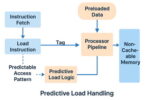You are currently viewing SemiWiki as a guest which gives you limited access to the site. To view blog comments and experience other SemiWiki features you must be a registered member. Registration is fast, simple, and absolutely free so please,
join our community today!
Secure-IC at DAC 2025: Building Trust into Tomorrow’s Chips and Systems
As semiconductor innovation accelerates, the chiplet-based design paradigm is redefining the landscape of advanced electronic systems. At DAC 2025, Secure-IC (booth #1208) will present a comprehensive suite of technologies engineered to address the… Read More
Modern vehicles have become quite sophisticated, like a supercomputer on wheels. They integrate a vast number of electronic components, including thousands of chips, to deliver advanced functionalities ranging from infotainment to critical safety systems. This increasing complexity necessitates a robust approach to … Read More
When people talk about bottlenecks in digital signal processors (DSPs), they usually focus on compute throughput: how many MACs per second, how wide the vector unit is, how fast the clock runs. But ask any embedded AI engineer working on always-on voice, radar, or low-power vision—and they’ll tell you the truth: memory stalls … Read More
The security of a device or system depends mainly on being unable to infer or guess an alphanumeric code needed to gain access to it or its data, be that a password or an encryption key. In automotive applications, the security requirement goes one step further – an attacker may not gain access per se, but if they can compromise vehicle… Read More
Wendy Chen, MBA from the University of Manchester, has been the Founder and CEO of MSquare Technology since 2021. With over 23 years in the semiconductor industry, Wendy’s career includes roles as Sales Director at Synopsys Technology, Vice President at TF-AMD, and Vice President at Alchip Asia Pacific. Her extensive experience… Read More
Sigasi® will demonstrate its Sigasi Visual HDL™ (SVH™) portfolio during DAC, showing how it supports the shift-left methodology for chip design, catching specification errors early in the design cycle and fixing the inefficient HDL-based design flow.
The traditional HDL workflow cannot accommodate the massive amounts of… Read More
As SoC complexities continue to expand to billions of transistors, the quest for higher levels of design automation also rises. This has led to the adoption of High-Level Synthesis (HLS), using design languages such as C++ and SystemC, which is more productive than traditional RTL design entry methods. In the RTL approach there… Read More
Semiconductor designs have been progressing over time to address wider product varieties and designs with increasing complexity. Organizations have been addressing intense time-to-market pressures by leveraging globally dispersed team resources. The project-centric design methodology, which once worked well with … Read More
The automotive industry is on the brink of a revolutionary transformation, where predictive maintenance and monitoring are taking center stage. In a recent webinar panel session, industry experts delved into the challenges, current approaches, and future innovations surrounding the guarantee and extension of mission profiles.… Read More
The automotive industry imposes stringent requirements on Functional Safety. For semiconductor companies involved in automotive chips and even further upstream in Silicon Intellectual Property (SIP), obtaining ISO 26262 certification is a fundamental requirement for product penetration into automotive applications.… Read More







